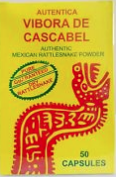Today’s New York Times has a front-page story about how the FDA knew that certain weight-loss supplements contained unlabeled amphetamine-like substances but did nothing about it, perhaps because its head supplement official came from the industry (and has since returned to it).
Let’s start with the science.
In 2014, Pieter Cohen and his colleagues noted that several athletes had been disqualified from competition after tests found evidence of a methamphetamine analog (N,α-diethyl-phenylethylamine) in their urine. The athletes said that the chemical must have come from their workout supplements. Cohen et al. tested the supplements and identified the analog as one with entirely untested stimulant, addictive, or other adverse effects in humans. They recommended its immediate removal from all dietary supplements.
Earlier that year, the FDA reported that 9 of 21 supplements containing Acacia rigidula to test positive for varying amounts of another methamphetamine analog, β-Methylphenethylamine (BMPEA). The FDA investigators said this compound could be misidentified as amphetamine during certain kinds of analyses, but did not identify the products found to contain BMPEA.
Cohen et al. then did their own tests of the kinds of supplements the FDA had tested.
The stimulant was present at quantities such that consumers following recommended maximum daily servings could consume a maximum of 93.7 mg of BMPEA per day. Consumers of Acacia rigidula supplements may be exposed to pharmacological dosages of an amphetamine isomer that lacks evidence of safety in humans. The FDA should immediately warn consumers about BMPEA and take aggressive enforcement action to eliminate BMPEA in dietary supplements.
The New York Times explains the context:
The controversy comes at a time when the supplement industry is under increased scrutiny. Last week, 14 state attorneys general, led by Eric T. Schneiderman of New York, called on Congress to provide the F.D.A. with more power to regulate supplements. Mr. Schneiderman’s office in February accused four major retailers of selling contaminated herbal supplements, and one of the companies, GNC, has agreed to extensive new testing and quality control procedures for its store-brand herbal products.
This brings us to the politics.
The supplement industry, of course, is doing everything it can to oppose and stop Schneiderman’s work.
Recall that Congress passed the Dietary Supplement Health and Education Act in 1994, essentially deregulating the industry. The act allowed absurd health claims for supplements and essentially removed much of the FDA’s authority to regulate these products.
The result was an increase in sales despite remarkably little evidence for efficacy.
As for conflicts of interest at FDA:
- Daniel Fabricant, the head of the FDA’s dietary supplement division at the time this was happening, came to the agency from the Natural Products Association, “Over 75 years of serving the natural products industry.” He has since left the FDA and now heads the NPA.
- The NPA spent nearly $1.5 million on lobbying in 2013 and 2014.
- The current head of the FDA’s dietary supplement division, Cara Welch, also came to FDA from the NPA.
Since DSHEA, the dietary supplement industry has gotten a pass. Suggestions:
- Congress should rescind DSHEA and give the FDA the authority to regulate supplements as it does food.
- The FDA should appoint officials who are independent of the industries they are supposed to regulate.


